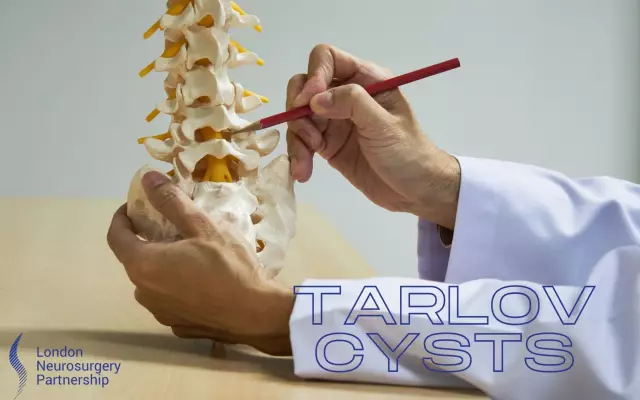- Author Rachel Wainwright [email protected].
- Public 2023-12-15 07:39.
- Last modified 2025-11-02 20:14.
Nabotov cysts
The content of the article:
- Causes and risk factors
- Symptoms
- Types of cystic formations of the cervix
- Diagnostics
-
Treatment of nabotovy cysts
- Cyst removal
- Drug therapy
- General recommendations
- Prevention
- Video
Nabot cysts (cysts of the cervix, retention cysts, cysts of the nabot glands) are formations in the form of a sac or a bubble filled with mucus, which do not disappear on their own and are a fairly common pathology. Most often, these neoplasms are observed in women 25-45 years old.

Photo of nabotovoy, or retention cyst
Causes and risk factors
In the cervix there are nabotovy glands that produce mucous secretions. The resulting mucus performs a protective function, preventing the penetration of infectious agents into the uterine cavity. During ovulation, the mucus becomes thinner, allowing sperm to enter the uterus.
In some cases, there is a blockage of the gland duct by desquamated epithelial cells of the vagina, cervix and uterus. At the same time, mucus continues to be produced, fills the gland, stretches its shell, and a cyst forms. The cysts formed in this way can reach 2 cm. The most likely causes:
- Hormonal disorders, in which there is a change in the consistency of mucus produced by the glands.
- Increased secretion of cervical mucus in the postpartum period, after abortions, a history of surgical operations on the cervix, in case of errors during the installation of an intrauterine device, non-observance of the rules of intimate hygiene.
Symptoms
Nabot cysts usually do not manifest themselves in any way, discomfort and any other signs of pathology are absent. They can be noticed only when viewed with the help of gynecological mirrors, colposcopy. When viewed or in the photo, it can be seen that single formations are usually located far from each other. Multiple neoplasms are often small in size, can be located separately or in groups. Large formations can lead to a protrusion of the surface of the cervix and be combined with a change in the cellular composition of the cervical epithelium (squamous epithelium is replaced by a cylindrical epithelium), but they usually do not have any effect on the menstrual cycle, egg maturation.
Symptoms appear only when an infection is attached. In this case, patients may experience:
- pulling or sharp pain in the lower abdomen;
- change in the consistency and color of vaginal discharge;
- pungent odor of discharge;
- discomfort during intercourse.
All these symptoms are not specific, they can be observed in other gynecological diseases.
The lack of timely treatment of the infection can worsen the course of pregnancy, become the reason for the impossibility of procreation, however, nabot cysts by themselves cannot lead to the development of disorders of the urinary system and a deterioration in health.
Types of cystic formations of the cervix
Cystic formations of the cervix are divided into several groups depending on the cause of their development, nabotovy cysts are only one of the possible options. The classification of pathology on this basis is presented in the table.
|
Type of education |
Explanation |
| Congenital | Develop in the prenatal period |
| Traumatic | Occur with mechanical damage to the mucous membrane |
| Infectious | The cause of development is the vital activity of pathological microorganisms in the genitourinary tract |
| Tumor | Caused by the presence of benign or malignant neoplasms in the body |
| Retention | They occur when the ducts of the glands are blocked, are not prone to malignant degeneration and the development of a tumor |
Depending on the localization, cystic formations are divided into:
- endocervical - located in the cervical canal;
- paracervical - located in the vaginal part of the cervix.
Depending on the size:
- small - up to 4 mm;
- medium - 5-8 mm;
- large - from 8 mm to 2 cm.
Retention cysts can be single or multiple, in some cases localized in groups.
The cavities that form in the nabotovy glands differ from other cystic formations. So, they do not have a thick shell, they are often small in size, an increase in the cavity occurs due to the accumulation of secretions, and not due to the growth of the capsule, there are often multiple formations.
Diagnostics
Since nabotovy cysts do not have specific manifestations, they are usually an accidental finding when examined for another reason.
In order to clarify the diagnosis and identify concomitant pathology, an in-depth examination is carried out, which may include the following methods:
- laboratory tests for urogenital infections;
- oncocytological research;
- colposcopy;
- ultrasound examination of the pelvic organs;
- magnetic resonance imaging;
- general analysis of blood and urine;
- determination of tumor markers;
- hormone tests; etc.
Treatment of nabotovy cysts
If the neoplasms are small, do not cause any discomfort, when determining the level of hormones, no abnormalities were found, no diseases of the reproductive system were detected, treatment is not carried out. It is enough for a woman to be examined regularly by a gynecologist - once every 6 or 12 months.
Cyst removal
If the retention cyst enlarges significantly, it is recommended to remove it to prevent protrusion of the cervical surface. Surgical intervention for this, as a rule, is not required, removal is carried out by gentle methods - using cryotherapy, electrocoagulation, radio wave or laser therapy.
After removal of the formation, a woman is required to visit a medical institution within the period specified by the doctor to assess the condition of the cervix.
Drug therapy
Medicines are prescribed only if there is a confirmed presence of inflammatory processes or other concomitant diseases, a treatment plan in this case is drawn up by a doctor taking into account the detected pathology. For example, hormone therapy may be required in the presence of an appropriate pathology. After removal of the cyst, the patient may be prescribed antibacterial drugs and anti-inflammatory drugs for prevention.
General recommendations
Usually, the patient is recommended measures to improve her lifestyle, which allows her to normalize the hormonal status:
- moderate but regular physical activity;
- rejection of bad habits;
- balanced diet;
- maintaining a normal body weight;
- strengthening the body's defenses;
- regular preventive examinations by a gynecologist.
Prevention
In order to prevent the appearance of neoplasms of the internal genital organs, it is recommended to lead an active lifestyle, eat right, give up bad habits, observe the rules of personal hygiene, treat diseases of the genitourinary tract in a timely manner, avoid accidental sexual intercourse, and frequent change of sexual partners. It is recommended to undergo a timely preventive examination by a gynecologist.
Video
We offer for viewing a video on the topic of the article.

Anna Aksenova Medical journalist About the author
Education: 2004-2007 "First Kiev Medical College" specialty "Laboratory Diagnostics".
The information is generalized and provided for informational purposes only. At the first sign of illness, see your doctor. Self-medication is hazardous to health!






